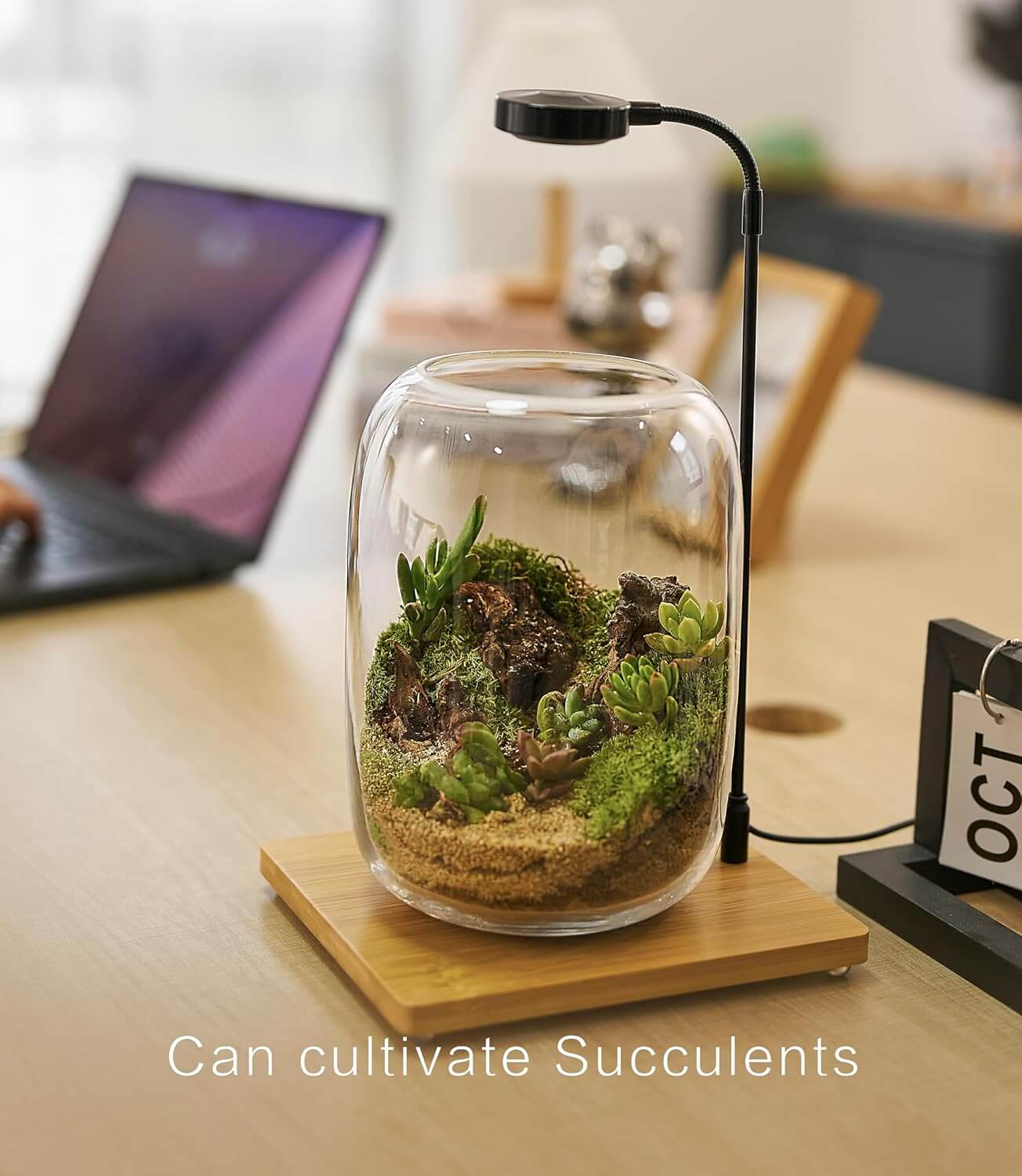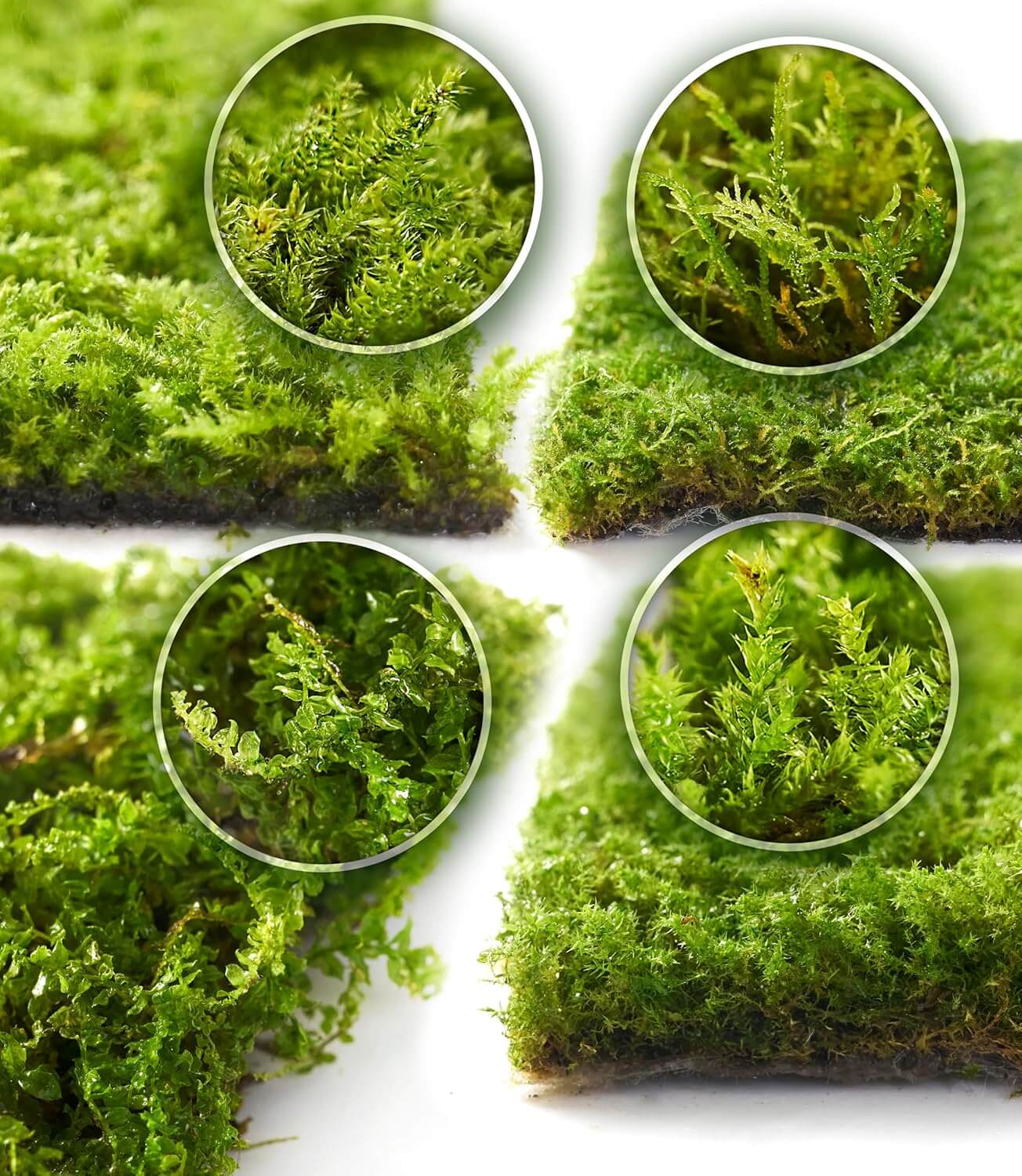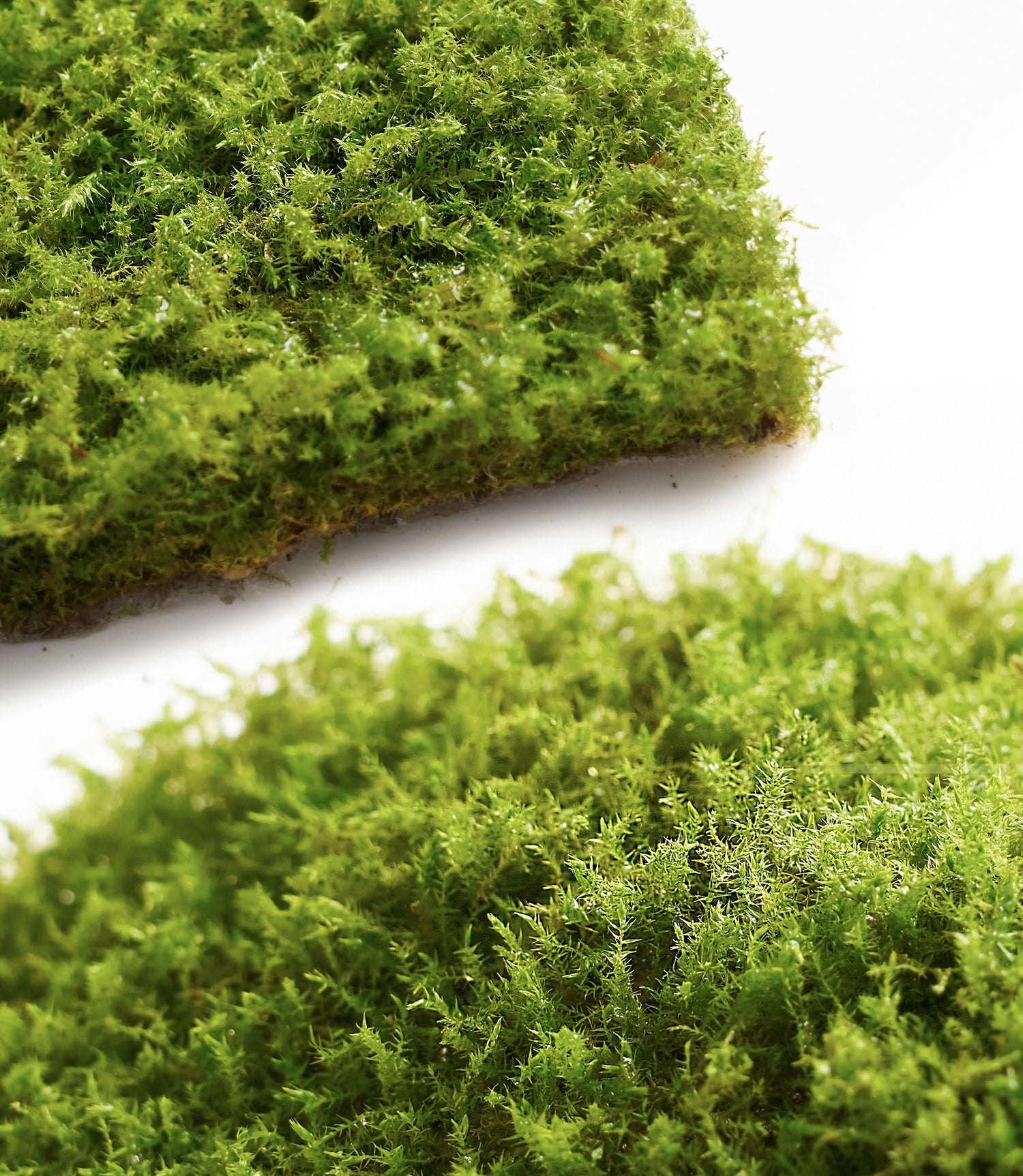Racomitrium Canescens: The Hardy Moss of Dry Landscapes
Introduction
Racomitrium Canescens is an aesthetically recognizable dried moss that is typically found in extreme ecological environments with strong sunlight and low humidity, the silver-gray velvety surface is not only highly decorative, but also has both aesthetically appealing and functionally drought resistant. This moss is an emerging favorite in modern dry scaping and architectural greening projects.
I. Structural Features
- Growth Form: Compact and low-growing, forming dense clumps or carpet-like mats. Stems stand upright or curve slightly.
- Leaf Characteristics: Narrow lance-shaped leaves densely covered with fine hairs, giving a fuzzy texture.
- Color Variation: Appears silvery-white under strong light; shifts to gray-green or olive when moist. Reflective sheen is particularly prominent.
- Height: Typically, 0.5–2 cm tall (about 0.2–0.79 inches), with strong surface adhesion and fine texture.
II. Adaptability and Habitat
- Distribution: Common in Arctic zones, mountain ridges, rooftops, and aging wall surfaces.
- Environmental Tolerance: Survives extreme conditions including strong sun, low humidity, and wide temperature swings from 0°C to 35°C (32°F to 95°F).
- Humidity and Light: Prefers relative humidity between 40%–70%. Requires full sun or bright exposure.
- Substrate Flexibility: Grows directly on hard surfaces such as stone, concrete, terracotta, or tiles—soil is not necessary.
III. Cultivation Guidelines
1) Substrate & Base Layer
- Setup: Can be grown directly on rock. For support, use a base of volcanic rock with a very thin humus layer.
- pH Preference: Between 6.0 and 7.5. Avoid waterlogged or compacted setups.
2) Lighting and Humidity Control
- Lighting Needs: Requires 6–10 hours of direct sunlight or high-intensity LED (≥6000K) light per day.
- Humidity Management: Alternate between wet and dry periods. Avoid excessive moisture, which can cause rot.
3) Watering Instructions
- Summer Care: Mist every 2–3 days to keep the moss viable.
- Winter Routine: Light misting once a week is sufficient.
IV. Propagation Techniques
- Methods: Tear or clip 1–3 cm segments and place directly onto a rock or tile surface.
- Attachment Time: Initial adhesion within 10 days; mat formation in 3–5 weeks.
- Stabilization Tips: Light pressure using mesh or pebble netting can help secure placement.
V. Common Issues and Solutions
|
Symptom |
Cause |
Suggested Action |
|
Localized Rot |
Waterlogging |
Reduce watering, improve ventilation, restore dry cycle |
|
Dull Color |
Insufficient sunlight |
Increase light exposure and direct sun time |
|
Surface Dust |
Dust accumulation in still air |
Gently brush with a soft brush or mist to clean |
VI. Landscape Applications
- Dry Garden Design: A natural fit for Zen-style dry landscapes and minimalist moss installations.
- Wall Greening: Suitable for experimental wall installations on concrete or stone; combines visual appeal with ecological value.
- Modern Decor: Blends well with white sand, pottery, and slate to form serene, contemplative design pieces.
VII. Summary
Racomitrium Canescens thrives where most mosses struggle. Its silvery-white appearance adds elegance, while its robust nature makes it ideal for dry scaping and modern moss art. Whether anchoring a minimalist design or softening hard surfaces, this moss brings durability, charm, and a sense of meditative quiet.






